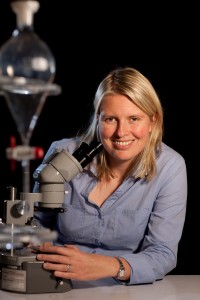Scientists are using neutron radiation to look inside solid steel and analyse the stresses within rail tracks. This research will ultimately improve the safety and operational and repair efficiency of heavy-haul railways.
The wheels of heavily laden trains place considerable rolling-contact loading on rail tracks. The heavy loads can change the material properties near the running surface and within the railhead—causing “fatigue”. A number of serious incidents, including derailments, have been attributed to rail failures resulting from rolling-contact fatigue and accumulated residual stress.
Bragg Institute instrument scientist Dr Vladimir Luzin is looking at fatigue in insulated rail joints (IRJs) within a research project initiated by the Cooperative Research Centre for Rail Innovation. IRJs are an integral part of rail track systems, but they are also weak points, and their replacement is the single largest track maintenance cost in New South Wales, apart from ballast work.
“When a rail comes out of a factory it has already some residual stress,” explains Vladimir. “Now we are looking at the atomic level to see how these stresses develop through the life of the rail joints.”
Vladimir uses neutron diffraction to see how residual stresses evolve through different production steps and during service. The beauty of neutrons is that they can penetrate steel—unlike X-rays—and they can be used to map the stresses inside the rail components non-destructively.
Manufacturers and operators want to control and minimise these stresses. This research, backed by modellers and metallurgists, will help industry partners cut costs, modify production methods and develop rails of a quality and strength that can handle increasing loads.
Bragg Institute, Australian Nuclear Science and Technology Organisation, Vladimir Luzin, Tel: +61 2 9717 7262, vladimir.luzin@ansto.gov.au, www.ansto.gov.au


